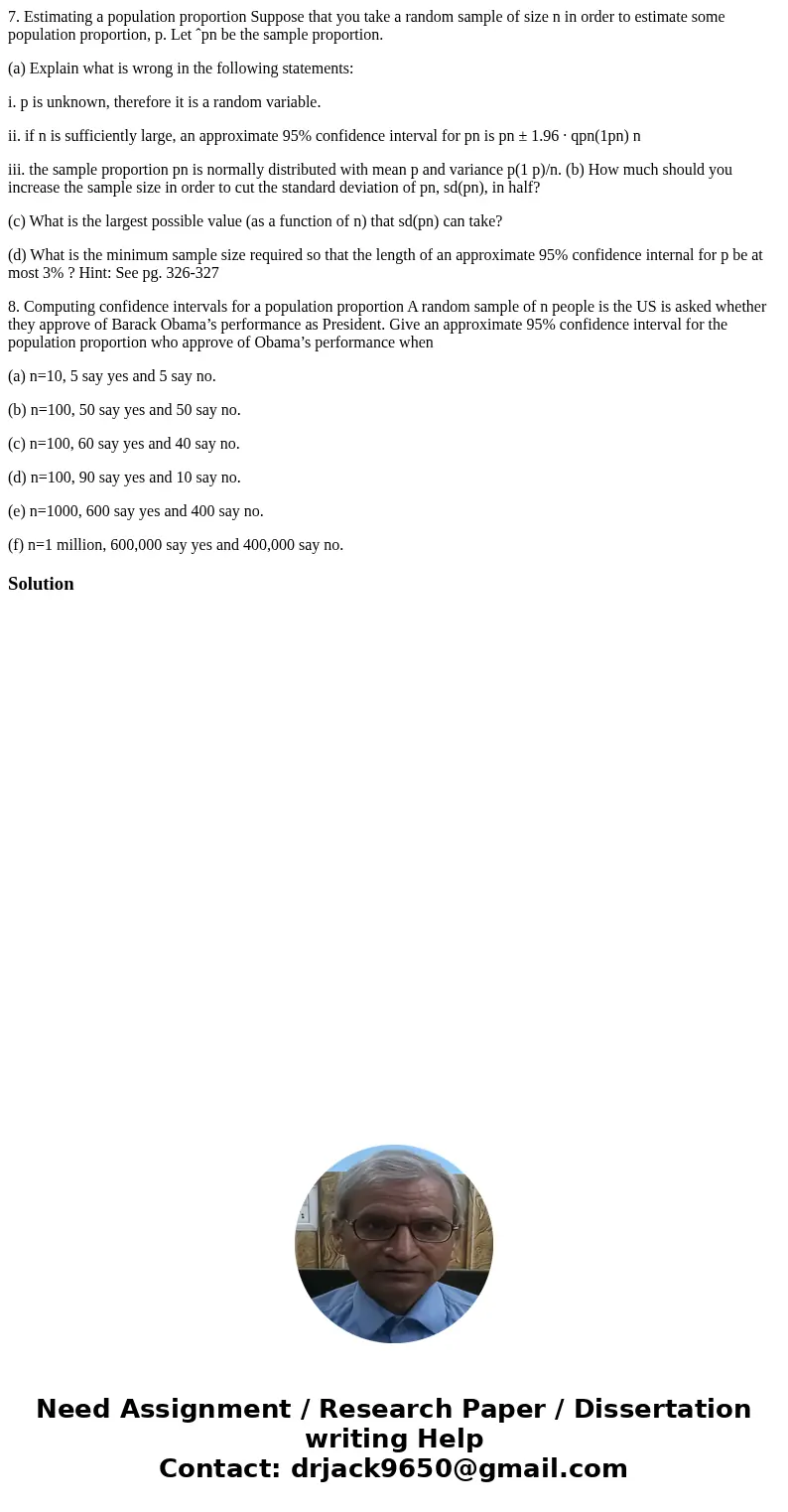7 Estimating a population proportion Suppose that you take a
7. Estimating a population proportion Suppose that you take a random sample of size n in order to estimate some population proportion, p. Let ˆpn be the sample proportion.
(a) Explain what is wrong in the following statements:
i. p is unknown, therefore it is a random variable.
ii. if n is sufficiently large, an approximate 95% confidence interval for pn is pn ± 1.96 · qpn(1pn) n
iii. the sample proportion pn is normally distributed with mean p and variance p(1 p)/n. (b) How much should you increase the sample size in order to cut the standard deviation of pn, sd(pn), in half?
(c) What is the largest possible value (as a function of n) that sd(pn) can take?
(d) What is the minimum sample size required so that the length of an approximate 95% confidence internal for p be at most 3% ? Hint: See pg. 326-327
8. Computing confidence intervals for a population proportion A random sample of n people is the US is asked whether they approve of Barack Obama’s performance as President. Give an approximate 95% confidence interval for the population proportion who approve of Obama’s performance when
(a) n=10, 5 say yes and 5 say no.
(b) n=100, 50 say yes and 50 say no.
(c) n=100, 60 say yes and 40 say no.
(d) n=100, 90 say yes and 10 say no.
(e) n=1000, 600 say yes and 400 say no.
(f) n=1 million, 600,000 say yes and 400,000 say no.
Solution

 Homework Sourse
Homework Sourse